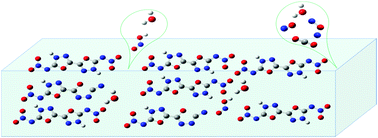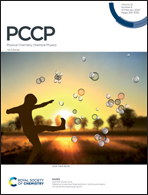Kinetics and mechanism of decomposition induced by solvent evolution in ICM-101 solvates: solvent-evolution-induced low-temperature decomposition†
Abstract
[2,2′-Bi(1,3,4-oxadiazole)]-5,5′-dinitramide (ICM-101), a high-energy-density material, was reported in recent years. ICM-101 is the first energetic material with the 2,2′-bi(1,3,4-oxadiazole) structure as the main ring structure. The molecular structure of ICM-101 shows excellent planar characteristics, providing a new option for the design of high-energy-density materials. However, during crystal preparation, ICM-101 easily interacts with solvents and forms the corresponding solvates. Interestingly, during thermal decomposition, when the solvent escapes from ICM-101 solvates, it induces the decomposition of ICM-101. In this study, the decomposition of ICM-101 induced by solvent evolution was evaluated in detail, and the decomposition kinetic equation was established. The mechanism of solvent-evolution-induced decomposition in ICM-101 solvates was further studied, and it was found that solvent evolution might produce defects in the crystals of ICM-101 solvates, and induce the decomposition of ICM-101 on the defects.



 Please wait while we load your content...
Please wait while we load your content...